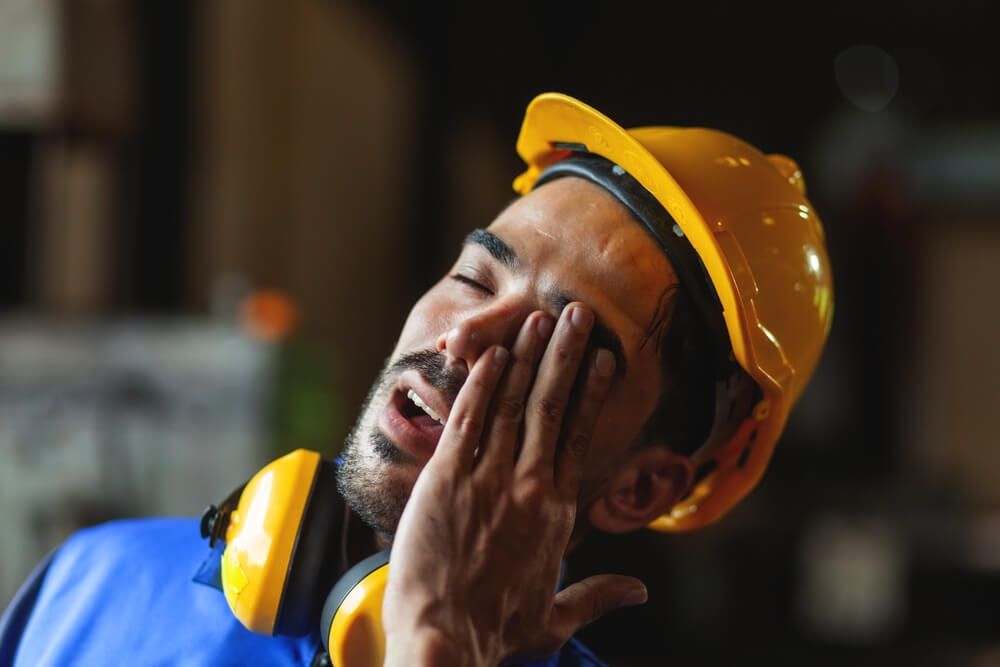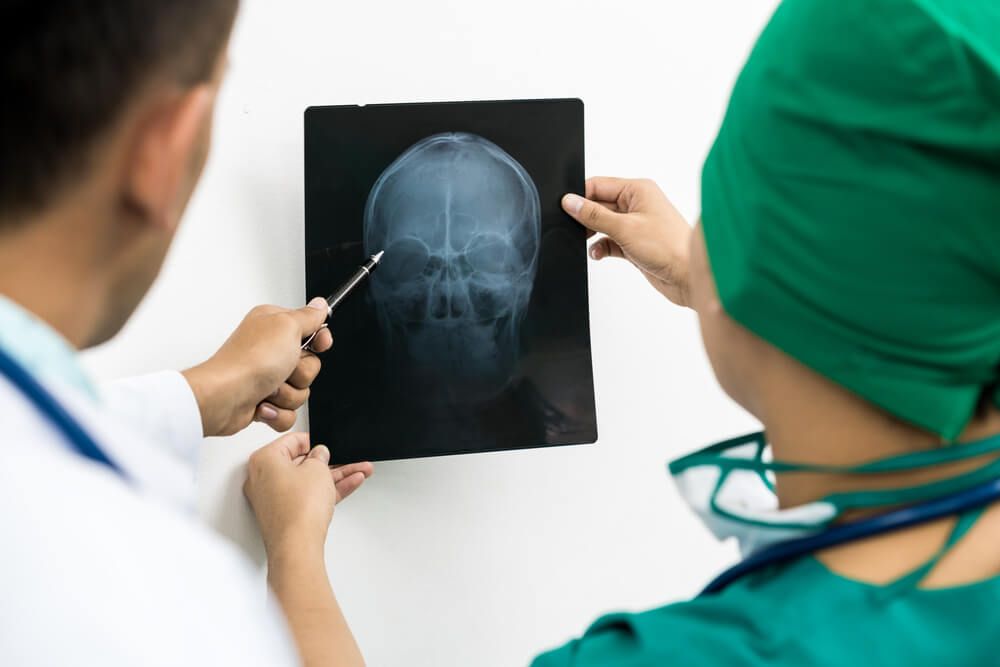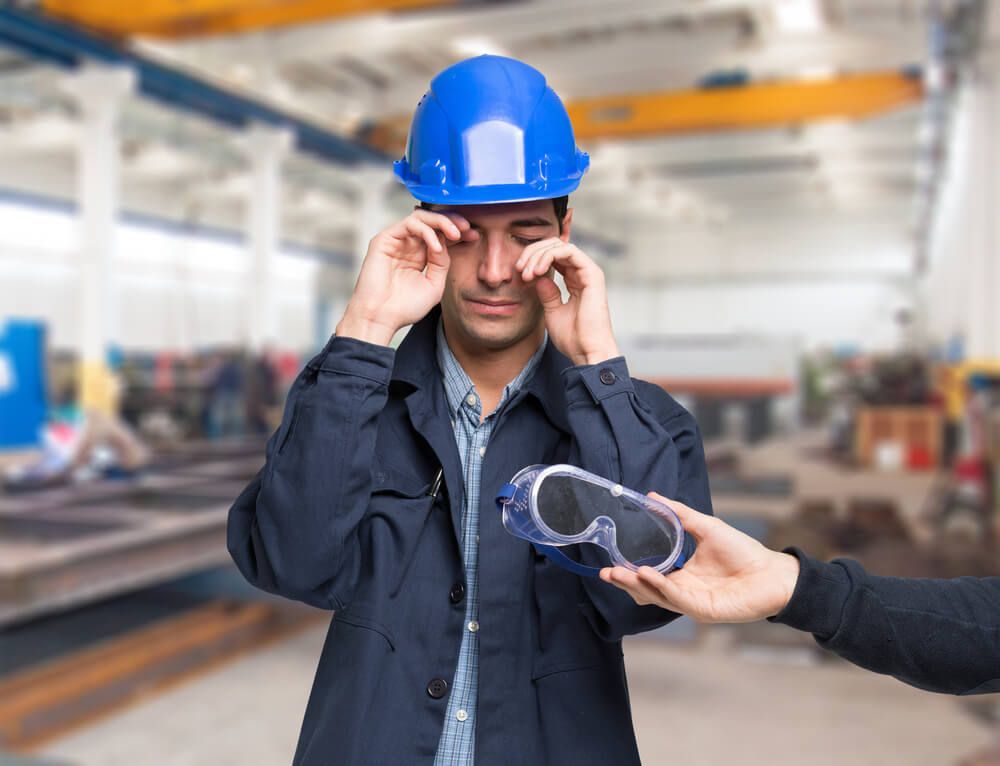
Blog
Eye Injury Prevention: A Comprehensive Approach for Home and Work
Since your eyes are vital organs, you must take care of them. Approximately 2.5 million people around the world suffer from eye injuries each year, but easy safety measures can help avoid mishaps and minimize harm when mishaps do happen.
What Is Meant By Eye Injury?
Burns, scratches, punctures, and bruises are examples of eye injuries. They may arise from chemical exposure, traumatic incidents, or foreign objects lodged in your eye. Your eyesight loss and eye pain after an injury to your eyes might be either temporary or permanent. If you're experiencing an eye injury, get in touch with an eye care professional immediately. Certain eye injuries heal well at home, but others require immediate medical attention.
What Kinds Of Eye Injuries Are Most Common?

Typical forms of injury to the eyes include:
Black eye
Bruising caused by a blow to the eye and surrounding tissues is commonly referred to as a black eye. A bruised eye typically affects the tissues surrounding your eye, as opposed to the actual eye. The region surrounding your eye will appear bruise-like, swollen, and discoloured in tones of blue, purple, or black. Although bruises usually go away on their own, a professional can help rule out more serious eye injuries.
Blunt trauma to the eye
A corneal fracture is a break in the bones around the eye caused by blunt trauma to the eye. The muscles that help your eye may become injured or stuck between broken bones because of a blowout fracture. Blunt force can dislocate, detach, tear, or destroy structures in the eyes when it comes into close contact with your eye. A deeper scrape could be dangerous, but small scratches or bits of dirt in your eye might not be.
Injuries involving foreign bodies
An object that isn't supposed to be in your eye is called a foreign body. Sand, grass clippings, metal shavings, or broken glass can fly into your eyes. Besides irritating and scratching your eye when it moves, foreign objects can infect it. Should an object become lodged in your eye and refuse to be removed by tears, you may require surgery to extract it.
Penetrating injuries
These occur when a projectile shoots into your eye at a rapid speed or when a sharp object pierces your eye. Paintball guns, BB guns, darts, fishhooks, and sharp objects can cause penetrating injuries. Penetrating objects may become lodged in your eye and require removal by a specialist. They may result in bleeding and harm to your eye's internal structures.
Which Common Factors Lead To Eye Injury?

Sports injuries
Sports involving flying balls, contact sports like boxing and football, and sports where you wield a racquet, puck, or bat are all common sources of eye injuries. If you use the proper safety glasses, you can prevent many sports-related injuries. However, not all sports activities have formal safety equipment.
Workplace hazards
Tradespeople and industrial workers are frequently vulnerable to risks related to radiation, chemicals, and flying debris. Among the riskiest tasks are metalwork and welding (such as grinding, hammering, or cutting). There is also manufacturing, forestry, and construction.
Yard and household work
Home remodelling tasks with power tools like saws, drills, paints, and various chemicals can result in mishaps and injuries. Debris from leaf blowers and lawnmowers could get into your eyes. Cleaning and cooking can put you at risk for heat or chemical burns.
Collisions and falls
Glass fragments or blunt impacts are the primary reason for eye injuries in auto accidents. Eye injuries can also result from falling into furniture or doorknobs. Kids may tumble into play structures or run into one another.
Recreation and toys
Yo-yos, air pistols, and flying toys are among the main toys that cause eye injuries to kids. Crayons, pens, and scissors are examples of arts and crafts tools. Paintball and BB guns cause eye injuries to people of all ages. Likewise, when amateurs use pyrotechnics in homes, they do the same thing.
Violence
Black eyes and various other injuries can result from public fights, assaults, and domestic abuse. Numerous weapons that have the potential to seriously harm eyes can be used in riots and urban warfare. Another frequent source of eye injuries in urban warfare is explosives.
Wear the Right Safety Glasses When Working

The danger of harm can be considerably decreased by using eye protection suitable for the task at hand. Ensure that any eye protection you purchase meets ANSI Standards. Some of the general suggestions are:
- Low-impact protection: This is useful for operations like manipulating a strap under tension, chipping, riveting, spalling, and hammering. Safety glasses with or without side shields, eye cup goggles, eye shields, and face shields are among the recommended protective gear. Select products bearing the ANSI Standards mark:
- Moderate impact protection: This is appropriate for applications like brick cutting, stone dressing, wire handling, scale, grinding, and machining metals, as well as some woodworking operations. Safety glasses with removable side shields, protective goggles, and face shields are among the recommended protective gear. Select products with the ANSI Standards symbol and the letter "I," which denotes that they are suitable for medium impact protection.
- High-impact protection: This is useful for jobs involving nail guns and explosive power equipment. The ANSI Standards mark and the letter "V" designating high-impact protection are examples of recommended protection. Filters and shields marked with the ANSI Standards mark are recommended for welding protection.
- Wide-vision goggles: Eye protection, or face shields with the letter "C" designating splash-proof and appropriate for chemical handling are recommended for chemical handling protection. Safety goggles marked with the ANSI Standards mark and the letter "D" are recommended for dust protection.
Five Ways to Keep Your Eyes Safe at Work
At employment, eye injuries can occur suddenly and unexpectedly. Dust, sparks, flying elements, chemical splashes, optical radiation flashes, and dust particles can all seriously impair an employee's vision. Thankfully, there are procedures that companies can put in place to lower the possibility of eye injuries. There are five steps that companies may take to reduce eye injuries in their workplace.
Recognize the Risks
There is an increased risk of eye injuries in the following occupations: welding, carpentry, electrical work, manufacturing, and building. All businesses ought to evaluate eye safety, nevertheless. The initial move is to identify any tools, substances, procedures, or jobs that could endanger the eyes. Remember that not all workers in a given area will always require eye protection.
In other locations, protective gear like Pentax safety glasses could just be necessary for a certain duty. Verify the functionality of safety features on machinery, such as guards, and that workers know how to operate it safely.
Select the Appropriate Form of Eye Protection
Make sure you are familiar with OSHA's requirements for safety glasses. A few of these rules are as follows:
- Side protection is a must for all safety glasses. When working with dangerous chemicals, certain eyewear that is resistant to chemicals is required.
- Filter lenses are necessary for welding or performing other light-radiation-intensive operations. Be aware of the correct filter lens tint number for the particular kind of welding process that will be employed.
Make sure your equipment can fit staff members who need prescription glasses. Either the prescription should be built into the equipment, or the worker must wear Onguard safety glasses that fit over prescription lenses without risk.
Frequently Inspect Safety Equipment
Workers should be instructed to check eyewear before using it, know how to ask for replacements, and know how to get rid of defective equipment so that it doesn't end up on someone else's body. Every day, all eye protection equipment should be checked for the following:
- Scratches and cracks in side shields and lenses
- Any wear and tear on the goggle body, side shields, nose pieces, or frames
- Tears and cracks in the goggles seals
- Headband fit and health
Wash Stations for Emergency Eye Washing Close to Chemicals
In locations where chemicals are utilized, place eye wash facilities that are conveniently accessible. Flushing injured eyes right away might lessen the impact of an unintentional splash or possibly save your vision. Areas, where dangerous chemicals are utilized, should be no more than ten seconds away from eye wash facilities or bottles.
Conduct Routine Eye Exams for Staff Members
Untreated visual issues may increase the risk of accidents. Pre-placement and routine medical tests of employees sometimes include eye testing, according to many businesses.
Keeping Your Eyes Safe at Home

Contrary to popular belief, household goods are to blame for over 125,000 major eye injuries each year. Many accidents involving chemicals splashing into the eyes can result in injuries. Dusting in difficult-to-reach places increases the possibility of particulates entering the eye. Yardwork also presents a risk to vision since rapidly moving objects could come into contact with the face. Additionally, elderly people and children should receive extra care because they are more likely to fall and have facial and ocular injuries. By using these suggestions, you can help prevent injuries to your eyes at home:
- Verify that there are no sharp edges on the furniture or fittings in your home.
- To increase stair safety, provide handrails and lighting.
- Use caution while popping the tops on wine or carbonated beverage bottles.
- When handling potentially harmful solvents and detergents, wear Guardian safety goggles. Avoid mixing cleaning products.
- Before spraying, rotate nozzles out of your face.
- After handling home chemicals, wash your hands.
- Guards for all power apparatus.
- Use safety goggles when operating a lawnmower or weed eater since flying debris might cause injury.
Keeping Your Eyes Safe When Playing and Outside
Hospital urgent care centers treat around forty thousand patients with sports-related eye injuries annually. Sports-related impact injuries to the eye are common in the hospital, usually from racquetball or soccer. Participating in any sport where a swift item is near puts you in danger. To help protect your eyes, heed these tips:
- When you are outside, wear Wileyx sunglasses that can help shield your eyes from ultraviolet (UV) radiation.
- Avoid staring at the sun directly, even when there is an eclipse.
- Before using equipment or engaging in gameplay, read and heed the instructions.
- When participating in sports and leisure activities, wear DVX safety glasses.
- When participating in high-impact sports, wear a helmet with a wire shield or polycarbonate face mask.
- When a device that fires paintballs, pellets, arrows, or other projectiles, use safety eyewear.
- When handling fireworks, put on safety goggles.
How Can Safety Glasses Shield Your Eyes?
All protective eye safety equipment is required by the Occupational Safety and Health Administration (OSHA) of the United States to meet higher impact resistance standards than your average pair of glasses. OSHA assesses the lenses and frames of safety glasses using three major categories of American National Standards Institute (ANSI) standards:
- High-velocity impact: This assesses how well the frame and lens withstand the force of a tiny object striking the lens quickly.
- High-mass impact: This establishes if, in the case of a reasonably heavy object striking the lens, it will remain in the frame.
- Durability: It assesses the frame's resistance to fire and corrosion besides other crucial safety aspects.
ANSI-compliant safety glasses are designated as follows:
- Z87 - Basic Impact Frames
- Z87+ - Frames that satisfy high-impact standards
- Z87-2: Prescription eye protection
Kinds Of Safety Glasses
Wearing safety glasses is recommended to shield employees' eyes from numerous workplace risks. Multiple qualities can be combined in designs to handle various occupational dangers.
There are three primary categories of protective eyewear: safety goggles, face shields, and safety glasses. The nature of your profession may also dictate the need for or use of additional forms of eye protection. One extremely specific type of protective eyewear is a welding helmet.
Safety glasses are the first line of defense against eye injuries for protective eyewear. When you go safety glass shopping, consider the various choices that can best suit your needs:
- Prescription safety glasses: These glasses are designed to help people who require vision correction. Single-vision, bifocal, and progressive lenses are available as corrective lens alternatives.
- Non-prescription safety glasses: Also referred to as "Plano" glasses, these are an option for people who do not require prescription lenses for corrective purposes.
- Safety eyewear with side shields: If there's a chance that flying debris will get close to your eyes, wearing eye protection with side shields is extremely necessary. Metal shavings, dust, wood particles, and flying objects are a few examples.
OSHA states that employers are in charge of providing eye safety instruction and practice to their staff. To make sure that you and other workers have the proper equipment and are using it, your authorized safety manager should direct you to the OSHA eye protection policy for your company.
Whether you should wear safety goggles designed to go over your usual spectacles, specialist eye protection for your particular demands, or safety eyewear with removable side shields, the best option to safeguard your eyes during work will rely on your particular circumstances.
Above all, make sure to wear eye protection. Verify that the eye protection you're wearing is appropriate for the job.








Leave your comment